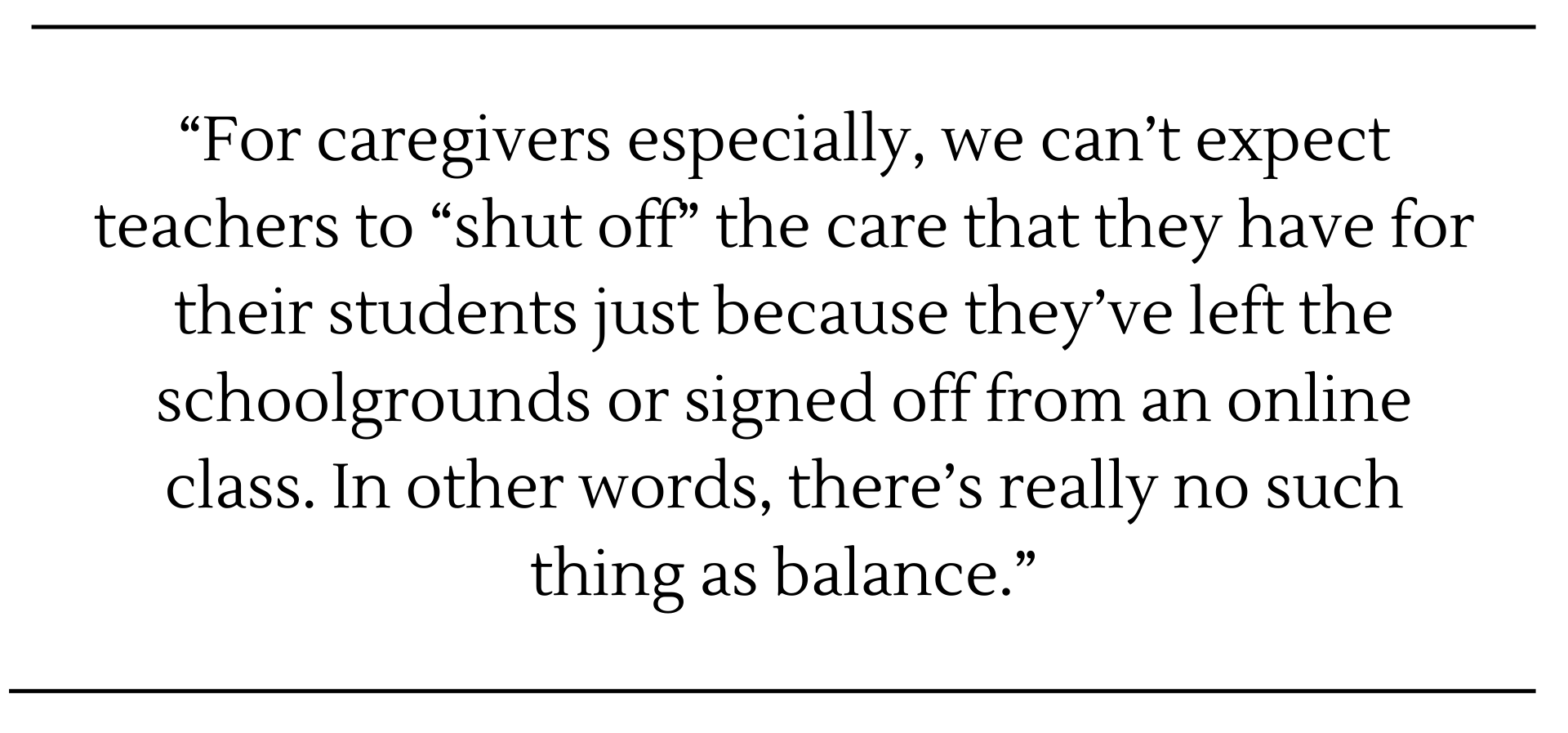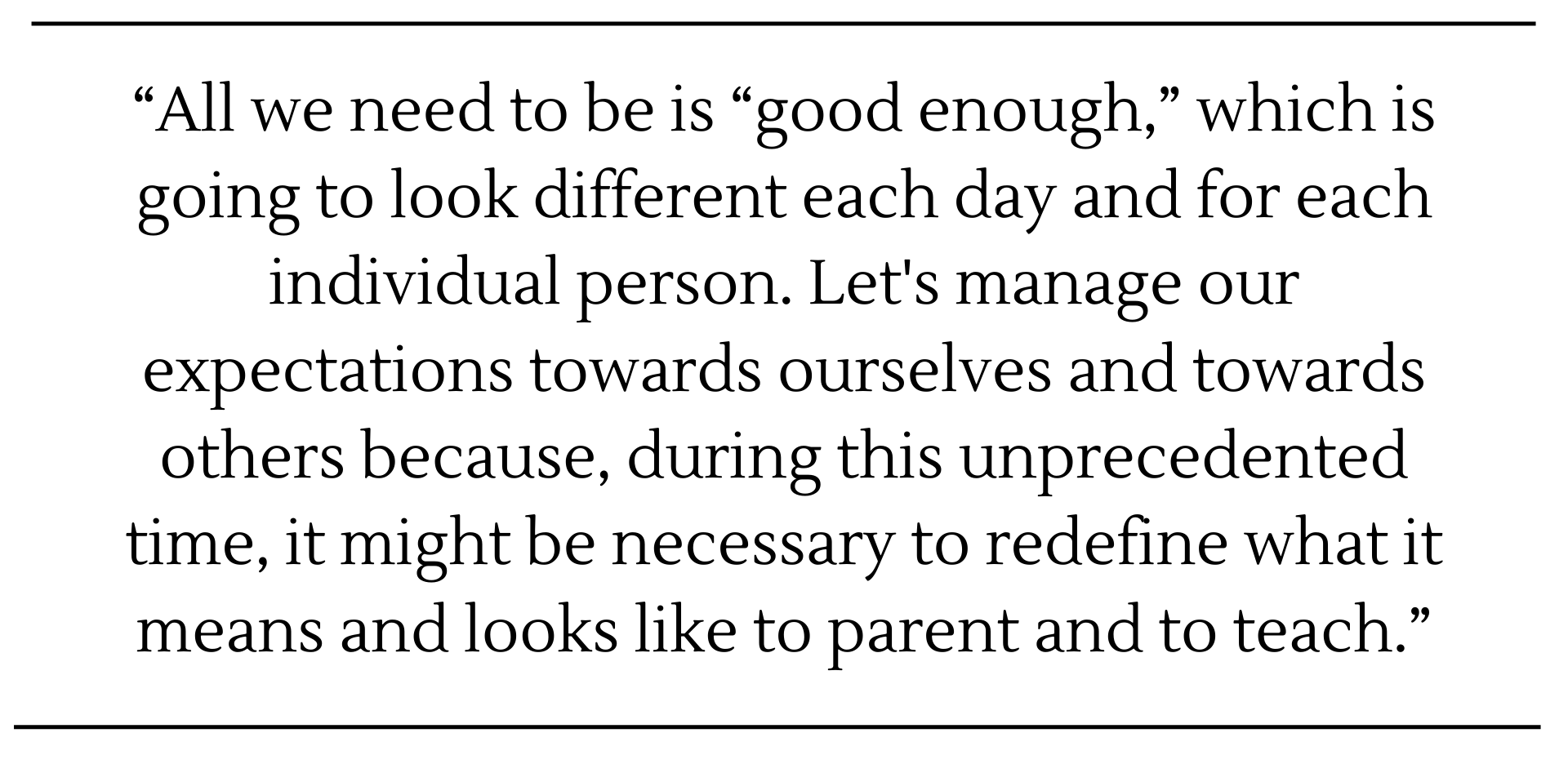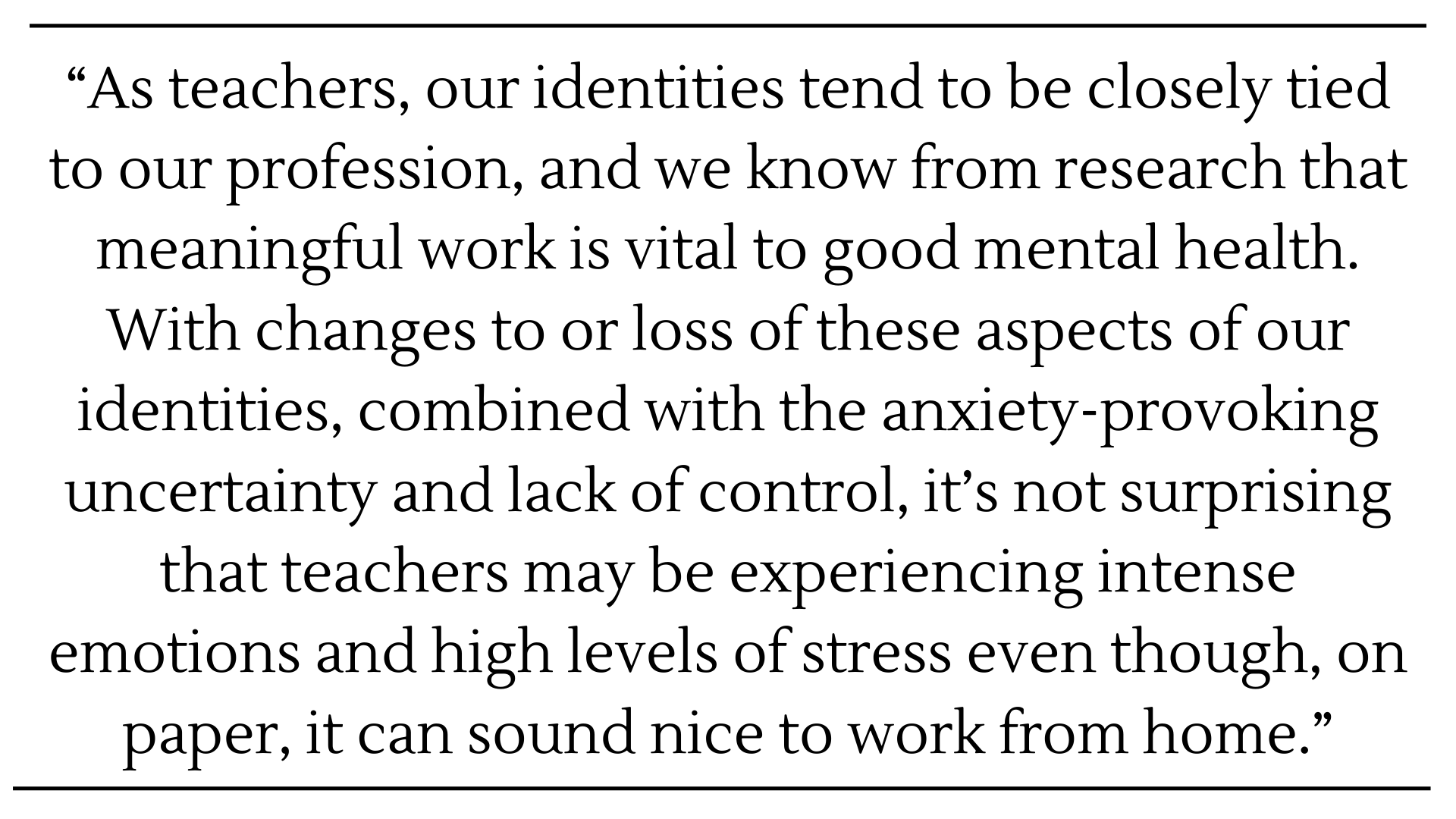Parenting and teaching during COVID-19 without feeling pecked to death by a chicken
It’s not all bad – here’s how I’m making the best of a trying circumstance.
Here you are trying to figure out what your life will look like as a teacher who – depending on where you live – might not actually be doing any more teaching at all this year. For others, you might be struggling to figure out how to meet the numerous needs of your students while not being fully able to tap into your tried and true pedagogies. Whichever of these situations most closely resembles your own, it’s likely that these circumstances are only compounded by the challenges of having your own children at home with you, including having to navigate newly-concentrated family responsibilities alongside your professional role as a teacher. Distance education might not be new to you, but distance education in a pandemic together with your family is most certainly a novelty.

I’m currently working from home along with my husband as we care for our two children while trying to maintain some semblance of “normal life,” keep our mental health in check, and keep our family relationships intact. For me, that means trying to appreciate the nicety of letting some things unfold at a pace that isn’t rushed. The most basic example would be letting our night owl daughter and adolescent son head to bed later and sleep in longer, which more closely resembles what their developing minds and bodies prefer, anyway. What that means is a calm, quiet morning for mom and dad, which has really set a more positive tone for the rest of our day as working parents. By being able to appreciate the positive aspects imposed upon our household by this difficult and worrisome time, I find myself better able to cope with the uncertainty of daily life during this pandemic. This deliberate focus on even such relatively small benefits is one strategy that helps build and sustain resilience even when we might otherwise be feeling trapped and overwhelmed.

I’m thinking about my life through ‘work-life equilibrium’ rather than ‘work-life balance’
The multiple and constant demands put upon us as both parents and teachers are a reality in non-pandemic times, but it’s even more important during this unprecedented global crisis to maintain what’s called ‘work-life equilibrium’ – as opposed to the infamous ‘work-life balance.’

If we think about “balance,” we’ll likely conclude that our lives are out of whack. How do you realistically undertake a balancing act when your personal and professional responsibilities take place simultaneously under the same roof? Balance requires us to be successful at work and at home by keeping various aspects of our lives within very specific parameters, like separate drawers in a dresser – but that just isn’t realistic under normal circumstances let alone during stay at home orders. The reality is that how we feel in our personal lives can impact how we feel in our professional lives, and vice-versa. For caregivers especially, we can’t expect teachers to “shut off” the care that they have for their students just because they’ve left the schoolgrounds or signed off from an online class. In other words, there’s really no such thing as balance.

Instead of balance, it might be more helpful to think of life in terms of equilibrium, which allows for flexibility. When you think of your life in this way, new demands and additional stress create mere shifts in our lives. It means accepting, for example, that the amount of time, energy, and focus we dedicate to certain aspects of our lives will constantly change depending on what our priorities are or where our attention is most needed at a given point in time.
I’m giving more attention to the relationship aspects of parenting and teaching – and accepting that I’m “good enough”
Equilibrium for parent-teachers means that as we individually and collectively work out how to stay resilient while maintaining strong school and family relationships, it might be necessary to shift the focus more on the relational aspects of our parenting and teaching and less on moving through curriculum and supporting our children’s academic pursuits. Let’s not forget that while the roles of ‘parent’ and ‘teacher’ have both always involved looking after the well-being of others, it’s likely that the next little while will require us to focus even more on the emotional needs of our students, of our own children, and of ourselves.

By recognizing and valuing this caring at work and at home, it might be possible to also recognize ways in which the overlap between the two might be particularly useful during this time of COVID-19. In both spheres, we only need to aim to be “good enough,” which is an idea first proposed by pediatrician D.W. Winnicott (1965), whose description of the “good enough mother” was meant to highlight the importance of reasonable expectations and plenty of self-forgiveness for parents who might otherwise feel as if their parenting efforts don’t measure up against some kind of unrealistic ideal. All we need to be is “good enough,” which is going to look different each day and for each individual person. Let’s manage our expectations towards ourselves and towards others because during this unprecedented time, it might be necessary to redefine what it means and looks like to parent and to teach.

I’m building up my resilience and reframing challenges as opportunities
As Michael Ungar reminds us in his excellent and timely book Change Your World, our resilience depends on our ability to navigate outside of our comfort zones and to work through new challenges, which includes challenges that we may not have chosen for ourselves like the current pandemic. The resilience literature is clear: to be able to navigate outside of our comfort zones, we need to rely on our relationships with other people while maintaining personal flexibility so that we can:
- Maintain a future orientation, such as focusing on what’s most important for our students and for our own children to have learnt or experienced by the time we will have come out of this current crisis.
- Focus on controllable aspects of our lives, such as taking on a decision-making process where we say to ourselves, “Knowing I can’t do X, how can I achieve a similar outcome by perhaps doing Y instead?”
- Uphold a sense of self-efficacy whereby we feel that we are an effective agent of change in our own lives. In this time especially, we have a great opportunity to help kids develop a sense of self-efficacy, where we can hand learning outcomes over to our students by having them tell us what they’d like to learn and how they’d like to demonstrate that learning.
This last point about helping kids develop a sense of self-efficacy underlines a wider opportunity that we have as both parents and teachers to innovate in ways that put students and our own children in the driver’s seat by supporting their learning in ways that they find most meaningful, instead of worrying about assigning them grades. The opportunity to support our students and our own children in using or accessing resources and helping them to work through the emotions involved in learning (e.g. frustration, disappointment, surprise, joy) may help leave us all more resilient in the end. This is particularly true since having kids’ emotional needs met with sensitivity — whether by teachers or parents/guardians — gradually helps kids learn to self-regulate, especially if the adults in their lives are also able to model self-regulation. This is not to say that this is at all easy, especially given the stress and anxiety that tend to accompany the experience of being thrown into unfamiliar territory. Nevertheless, the time we find ourselves in presents a rare opportunity for innovation.
I’m recognizing how my identity is so tied to being a teacher – and that it’s okay to be experiencing a wide range of emotions right now
As teachers, our identities tend to be closely tied to our profession, and we know from research that meaningful work is vital to good mental health. With changes to or loss of these aspects of our identities, combined with the anxiety-provoking uncertainty and lack of control, it’s not surprising that teachers may be experiencing intense emotions and high levels of stress even though, on paper, it can sound nice to work from home. It’s okay and completely normal to feel like you don’t want to be stuck at home and it’s just as okay and normal to be feeling relief, excitement, or whatever other emotions you might be experiencing.

Emotions are signposts for how we are interpreting our situations. Try to make time to check in with yourself to see what your emotions might be telling you. Find ways to connect with others and share your emotional experiences, even if your personal situation and strategies for working through the current situation are very different from that of other people. In any case, it’s likely that we’re all experiencing similar emotions; knowing that others are feeling similarly can help validate our experiences while reducing the pressure of the high expectations to which we often hold ourselves. Sharing our experiences and supporting the emotional needs of our friends, neighbours, and colleagues builds resilience in ourselves and in our communities, while also modelling a positive coping strategy for our students and for our own children.
Together, we can make it through this challenging time. Don’t forget to reach out, stay flexible, and stay healthy. We’re all in this together.
Photos: Adobe Stock
References and Further Reading
Ungar, M. (2018). Change your world: The science of resilience and the true path to success. Toronto, ON: Sutherland House.
Winnicott, D. W. (1965). The maturational process and the facilitating environment. New York, NY: International Universities Press.
